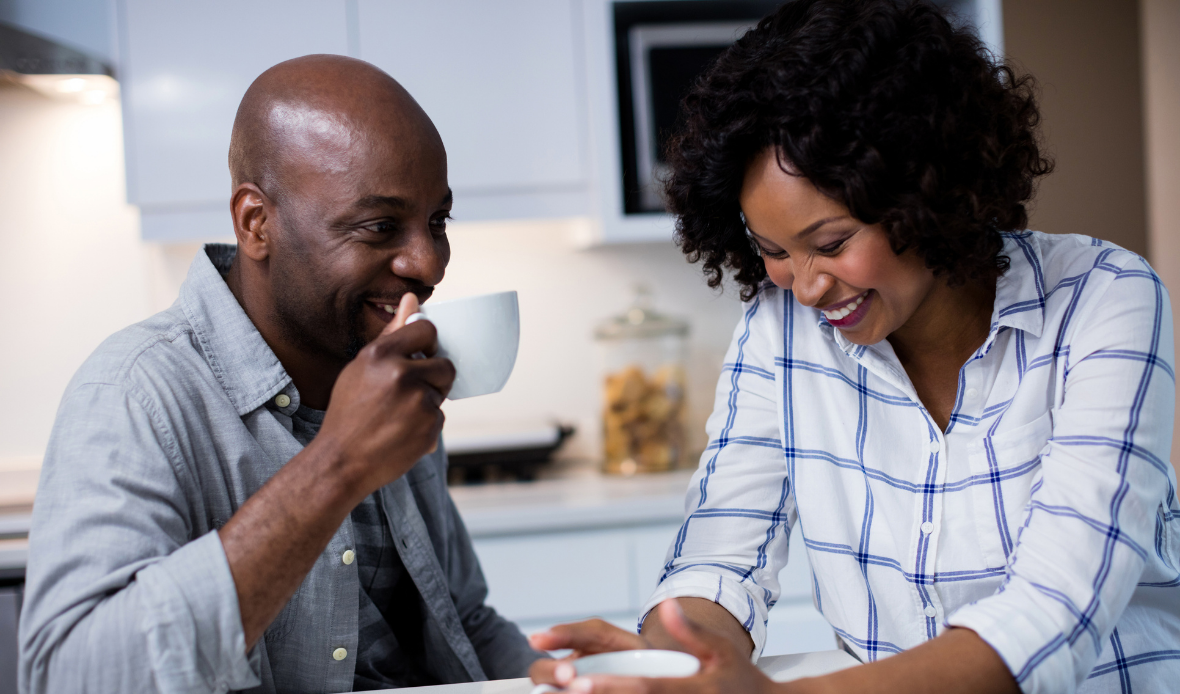
It probably comes as no surprise that when you’re stressed out, calling a friend or taking a break with your partner or kids can be an instant remedy.
“Laughing with family and friends can improve mood, lower blood pressure, relieve stress, and improve your immune system,” sums up MOBE Guide Alessandra. But are these stress-fighting warm fuzzies only possible when we’re connecting with people we love? It might depend on how you define love.
Barbara Fredrickson, a psychologist, researcher, and distinguished professor, calls love the “supreme emotion.” But, more than just romantic relationships, family love, and friendships, Dr. Fredrickson defines love as “the moment-to-moment experience of warm, mutual caring that we can feel with any person—even strangers—in everyday interactions.”1
With this new definition, a good conversation with a coworker or a shared joke with a stranger can have just as much power in your life—especially when stress is high.
The power of love.
According to Dr. Fredrickson, those moments of warm, mutual caring are important to our health and happiness and can affect our brains and bodies at the cellular level. Research has shown that we when feel connected to another person, our brains tend to sync up with each other.
“Research shows us that cultivating positive social connections is one of the most powerful ways to mitigate the negative impacts of stress on the body,” explains MOBE Guide Tara. During positive social encounters, the hormone oxytocin is released into the body which reduces stress hormones, heart-rate, and blood pressure.2 It’s also been found to lower pain, change the way our body responds to potential stressors, and even promote the growth of new brain cells.3 Talking on the phone, an engaging conversation, and even making eye contact all trigger oxytocin and the positive side effects.
Practice positive relationships.
We can’t control our brain’s power to sync up with another or our body’s ability to release hormones, but we can try to cultivate positive connections on purpose. If you’re feeling a little less connected to your network right now, try the "three loving connections” exercise based on Dr. Fredrickson’s research.4 Each day, look for three opportunities to connect with others—they can be with the same person or three different people, a relative, friend, coworker, or complete stranger. Approach the potential interaction with warmth, respect, and good will. Offer eye contact and make the effort to stay present. At the end of every day, think about your three interactions, and write down how in tune and close you felt with the person during each one. This kind of practice keeps you open to positive connections, helps you feel more socially connected, and generates positive emotions.
Looking for more ways to build healthier habits and improve your overall well-being? A MOBE Guide can give you one-to-one support. Get started today.
References:
1. Suttie, Jill. “The Love Upgrade.” Greater Good Magazine, February 4, 2013. https://greatergood.berkeley.edu/article/item/the_love_upgrade.
2. Uvnäs-Moberg K. Oxytocin may mediate the benefits of positive social interaction and emotions. Psychoneuroendocrinology. 1998 Nov;23(8):819-35. doi: 10.1016/s0306-4530(98)00056-0. PMID: 9924739.
3. Hopper, Elizabeth. “How Your Social Life Might Help You Live Longer.” Greater Good Magazine, July 28, 2020. https://greatergood.berkeley.edu/article/item/how_your_social_life_might_help_you_life_longer
4. Harvey, Shannon. “The Power Of Love: How 3 Micro Moments Change Everything.” May 7, 2015. https://www.shannonharvey.com/...